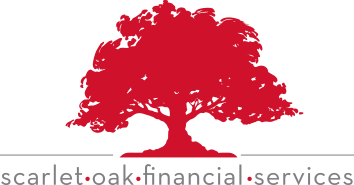College costs
For the 2023-2024 college year, the average tuition and fees for full-time students at a four-year public college for in-state students is $11,260, the average cost at a four-year public college for out-of-state students is $29,150, and the average cost at a four-year private non-profit college is $41,540.[1] The COA figure includes tuition and fees, room and board, books and supplies, transportation, and personal expenses. Many private colleges cost substantially more.
College savings options
It is important for parents to start putting money aside for college as early as possible. But where should you put your money? There are many possibilities, each with varied features. For example, some options offer tax advantages, some are more costly to establish, some charge management fees, some require parental income to be below a certain level, and some impose penalties if the money is not used for college.
Following is a list of options:
-
-
- 529 savings plans
- 529 prepaid tuition plans
- Coverdell education savings accounts
- Custodial accounts (UTMA/UGMA)
- Mutual funds/brokerage account
- Certificates of deposit (CDs)
- S. savings bonds
- Traditional IRAs and Roth IRAs
- Employer-sponsored retirement plans
- Employee stock purchase plans
- Cash value life insurance
- Tax-deferred annuities
- Options unique to business owners
-
Factors that may affect college savings decisions
When investing for college, there are several factors to consider.
Tax advantages
Money saved for college goes a lot further when it’s allowed to accumulate tax free or tax deferred. To come out ahead in the college savings game, it’s wise to consider tax-advantaged strategies.
The result is that in some cases your return can be greater with a tax-advantaged strategy like a 529 plan than with an investment that offers no special tax advantages (although there is no guarantee that an investment will generate any earnings).
Kiddie tax
Many parents believe they can shift investment assets to their child in order to avoid high income taxes. But if the child is under age 24, the “kiddie tax” rules apply.
Generally, earnings, interest, and capital gains earned by your child are taxed each year under special “kiddie tax” rules that apply when a child has unearned (passive) income. Under the kiddie tax rules, a child’s unearned income over a certain threshold ($2,500 in 2024) is taxed at parent income tax rates. The kiddie tax rules generally apply to children under age 18 and full-time college students under age 24 whose earned income doesn’t exceed one-half of their support.
Financial aid
Whether or not a child will qualify for financial aid (e.g., loan, grant, scholarship, or work-study) may affect parental savings decisions. The majority of financial aid is need-based, meaning that it’s based on a family’s ability to pay.
Predicting whether a child will qualify for financial aid many years down the road is an inexact science. Some families with relatively high incomes may qualify for aid, while those with lesser incomes may not. Income is only one of the factors used to determine financial aid eligibility. Other factors include amount of assets, family size, number of household members in college at the same time, and the existence of any special personal or financial circumstances.
If a child is expected to qualify for financial aid (and most do), parents should be aware of the formula the federal government uses to calculate aid–called the federal methodology–because there can be a financial aid impact on long-term savings decisions. The more money a family is expected to contribute to college costs, the less financial aid a child will be eligible for.
Briefly, under the federal methodology, parents are expected to contribute 5.6 percent of their assets to college costs each year, and students are expected to contribute 20 percent of their assets each year.
Also, the federal methodology excludes some parental assets from consideration in determining a family’s total assets:
-
-
- Retirement accounts (e.g., IRA, 401(k) plan, 403(b) plan)
- Home equity in a primary residence or family farm
- Cash value life insurance
- Annuities
-
Thus, all options being equal, parents may choose to put their money into one or more of these nonassessable assets.
Time frame
Time frame is a very important consideration. Is the child in preschool or a freshman in high school? Obviously, most college savings strategies work best when the child is many years away from college. With a longer time horizon, parents can be more aggressive in their investments and have more years to take advantage of compounding.
When the child is a baby up until about middle school, most professional financial planners recommend putting more money into equity investments because historically, over the long term, equities have provided higher returns than other types of investments (though past performance is no guarantee of future results). Then, as the child moves from middle school to high school, it’s usually wise for parents to start shifting a portion of their equities toward shorter-term, fixed income investments.
If the time frame is only a few years, parents will be limited in their choice of appropriate strategies. For example, if the child were in high school, equities normally would not be a preferred strategy due to the short-term volatility of these investments. Similarly, parents would not have enough time to build up cash value in a life insurance policy.
Flexibility
With some college savings options, parents will pay a penalty if the funds aren’t used for college. Other options have no such restrictions on the use of funds.
Control issues
Generally, when parents give money or property to their child, they lose control of those assets. Such a loss of parental ownership can take place immediately, as in the case of an outright gift of stock certificates, or it may be delayed, as in the case of a custodial account or trust. In any event, parents must assess their personal feelings about relinquishing control of assets to their child. Some children may not be mature enough to handle such assets, whereas others can be counted on to use them for college costs.
Discussing a college funding plan with your child
As college expenses continue to rise relative to the means of the average family to pay such costs in full, parents may find it helpful to sit down with their older children and discuss ways to pay for college. For example, parents may want to discuss:
-
-
- Whether they intend to fund 100 percent of college costs or whether they expect their child to contribute and, if so, in what amount. For example, parents might convey their expectation that their child contribute a certain percentage of all earnings from a part-time job or a portion of all gifts.
- Whether the child will play a role in the savings strategy. For example, parents who want to gift appreciated stock to their child should convey their expectation that the child will apply all of the gains to college costs.
- Whether any money will need to be borrowed, and if so, how much and in whose name the loan(s) will be obtained. The amount that needs to be borrowed may affect the type of college the child applies to (e.g., public or private, top tier or middle tier).
- Whether there will need to be shared financial responsibility during the college years. For example, the child may need to participate in a work-study program or obtain outside work during the college years.
-
Communicating these expectations ahead of time can prevent unpleasant surprises and help parents and their children better plan for the expenses that lie ahead. Also, an open discussion can give children an increased awareness of the financial burden their parents may be undertaking on their behalf.
Dilemma of saving for college and retirement
For many parents, especially those who started families in their 30s and 40s, the problem of saving for college and retirement at the same time is a nagging reality. Most financial planning professionals recommend saving for both at the same time. The reason is that parents typically can’t afford to delay saving for their retirement until the college years are over, because doing so would mean missing out on years of tax-deferred growth and, possibly, employer-matching 401(k) plan contributions.
The key to saving for both is for parents to tailor their monthly investment to the particular investment goal — college or retirement. Parents will then need to determine their time frames and liquidity needs for each goal, which may require the assistance of a financial planning professional.
Scarlet Oak Financial Services can be reached at 800.871.1219 or contact us here. Click here to sign up for our weekly newsletter with the latest economic news.
Source:
Broadridge Investor Communication Solutions, Inc. prepared this material for use by Scarlet Oak Financial Services.
Broadridge Investor Communication Solutions, Inc. does not provide investment, tax, legal, or retirement advice or recommendations. The information presented here is not specific to any individual’s personal circumstances. To the extent that this material concerns tax matters, it is not intended or written to be used, and cannot be used, by a taxpayer for the purpose of avoiding penalties that may be imposed by law. Each taxpayer should seek independent advice from a tax professional based on individual circumstances. Scarlet Oak Financial Services provide these materials for general information and educational purposes based upon publicly available information from sources believed to be reliable — we cannot assure the accuracy or completeness of these materials. The information in these materials may change at any time and without notice.
[1] https://research.collegeboard.org/trends/college-pricing/highlights

![Understanding College Saving Options [2024]](https://scarletoakfs.com/wp-content/uploads/2023/08/Understanding-College-saving-options-Header-scaled.jpg)

